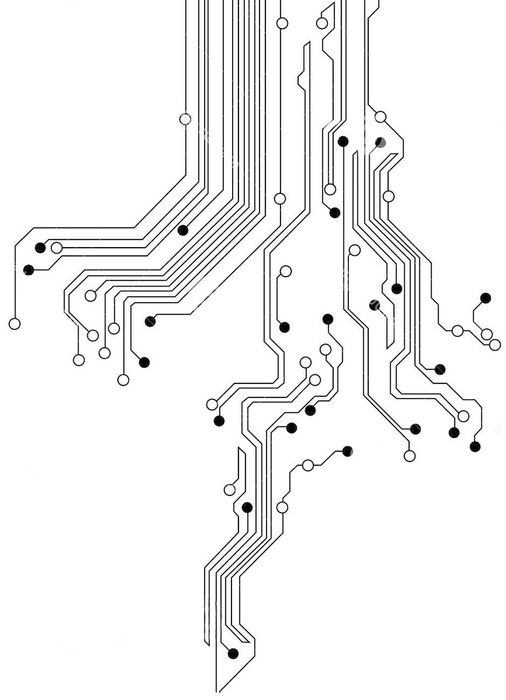Most observers looking for paths of development for Armenia point to the success of the tech industry, in particular software development. It’s a good story: 20+% annual growth, salaries much higher than the national average, an independent, well-educated workforce, and significant participation by well-known foreign companies. In the space of just over 15 years, the industry grew more than 15-fold in the number of firms, 10-fold in number of employees, and total industry revenue now represents 5 percent of GDP, and 11 percent of exports for Armenia.
As we dig further, though, we see that the story is more complicated. First, 30 percent of industry revenue comes from the Telecom/Internet Service Provider (ISP) sector, primarily due to the significant investment in developing a world-class mobile telephone and Internet network. While the vast improvement in Internet availability, reliability, speed and affordability has been a major driver for the rest of the industry, this is an indirect effect, rather than contributing directly to the competitiveness of the IT sector on the global market. Next, demand for talent far outpaces the current educational system’s ability to produce qualified graduates – this has led to increased poaching and a general increase in salaries, which reduces competitiveness for pure outsourcing/offshoring businesses. Lastly, most firms have structured their operations on a cost-plus basis, meaning that the real market value of software and services is realized abroad, and is not reflected in the size of the industry.
Still, many observers believe that current trends in the global IT market are creating new opportunities for growth and relevance for Armenian tech companies. If the industry at large – as well as government and educational institutions – react quickly and earnestly to these trends, Armenia has an opportunity to capture an inordinate share of the new value being created as a result of these trends.
“ During the Soviet era, Armenian computer scientists and hardware engineers became very adept at driving more performance from inferior Soviet military hardware. As a result, there is a deep tradition and expertise in developing software algorithms which perform better in constrained environments. ”
Math, math and more math
Much has been made of recent advancements in the fields of artificial intelligence (AI) and machine-learning (ML). These two [related] disciplines have similar goals – to teach machines to become “smarter” by observing past behavior and outcomes to make better decisions, much as the human brain learns to complete tasks, or make associations between different concepts more efficiently over time. The basis for these disciplines is mathematics or, more accurately, the combination of statistics, probability theory, predictive analytics, and technologies such as neural networks which can create systems which learn to become smarter over time.


Initially, such systems were based on pure, brute processing power – one of the best examples is when Big Blue, the IBM software program, defeated the then reigning world-champion chess player Gary Kasparov in 1998. Big Blue won because the number of parallel processors in the system enabled it to calculate possible moves and outcomes much faster, and with more precision, than even the best player in the world. However, the technology has evolved – last year, when the Google-sponsored Deep Mind project defeated the world’s best Go player (an Asian game with many more possible move combinations than chess), it did so because it was “trained” to recognize good vs. bad moves through repeated exercises, much as the human brain does.
Why is this relevant to Armenia? Because despite the general decline in the quality of the educational system following the collapse of the Soviet Union, Armenia still produces many excellent mathematicians and physicists. And this new world of data science (the broader discipline which includes AI, ML, and other related fields), is based on mathematics and algorithms. In fact, following the break-up of the Soviet system, hundreds (if not thousands) of Armenian and Russian physicists and mathematicians were scooped up by the world’s leading research institutions and investment firms because of their deep capabilities in mathematical modeling and algorithm-writing. The current data science revolution is creating opportunities for today’s generation of bright young minds from Armenia – we only need to provide the right training and guidance and, more importantly, the chance to use these skills in Armenia, rather than emigrating to greener pastures in the US or Europe.
“ In the space of just over 15 years, the IT industry grew more than 15-fold in the number of firms, 10-fold in number of employees, and total industry revenue now represents 5 percent of GDP, and 11 percent of exports for Armenia. ”

Big Blue, the IBM software program, defeated the then reigning world-champion chess player Gary Kasparov in 1998.
Internet of Things
The next big trend is called the Internet of Things (IoT). The first two waves of the Internet revolution were focused on connecting people to information and services (Internet 1.0), and then to each other (Web 2.0). In the third Internet revolution, the ubiquity of the Internet, and the digitization of many technologies, means that we can now connect machines (things) to each other. While the examples that most people recognize, such as refrigerators which order milk when you’re running low, seem superfluous, there are many more compelling “use cases” in industrial production, agriculture, mining and road safety.
This next wave is expected to generate hundreds of billions of dollars in value in the coming decades, and again, Armenia is well-poised to benefit because of its previous experience in electronic design automation. Here’s why: During the Soviet era, Armenian computer scientists and hardware engineers became very adept at driving more performance from inferior Soviet military hardware, to help achieve parity with the more sophisticated weaponry produced in the West. As a result, there is a deep tradition and expertise in developing software algorithms which perform better in limited/constrained environments – exactly what is needed in the Internet of Things. In fact, the first (and still largest) wave of Western investment in Armenian high tech was spearheaded by Western firms such as Synopsys, Mentor Graphics and National Instruments. As a result, Armenia has a disproportionately large number of software and hardware engineers with the experience and know-how to drive development for IoT. Couple this with prominent Armenians in the US who are spearheading IoT efforts (such as Raffi Krikorian, who until recently ran Uber’s Driverless Car program, and Naira Hovakimyan, an expert in stability algorithms for military and commercial drones), and there’s another recipe for success and growth for the Armenian tech sector.
The Digital Armenian (or Armenia-based) Nomad
The third trend is the decomposition of the architecture of software and technology. Previously, major developments in technology required concentrated and sustained investment in monolithic programs with millions and millions of lines of code produced within the four walls of highly-protected – and protective – software companies. Apple, IBM, Microsoft, SAP and Oracle created competitive advantage by writing proprietary operating systems and programs that relied on sheer scale to achieve market dominance. Over the past two decades, the open-source movement (free software developed by hundreds [if not thousands] of independent contributors), micro-services, Software-as-a-Service delivered over the Internet, and simple mobile applications with very low barriers to entry, have fundamentally changed the nature of competition in the technology industry. While companies such as Facebook, Instagram and WhatsApp still require hundreds of millions of dollars to reach the top of their respective markets, these applications are often inter-connected, and composed of hundreds of micro-services. This means that small teams, or even individuals spread throughout the world have an opportunity to contribute to, or benefit from, this increasingly distributed architecture of the technology industry. To be fair, this is a general trend where Armenia has no distinct competitive advantage (as in the previous two trends) but is nevertheless poised to benefit as much as other countries.

From Theory to Practice – Today
The good news is that some Armenian companies are already taking advantage of these trends. PicsArt and Teamable are two Armenia-founded companies which both received significant venture investment to incorporate data science into consumer and B2B applications. National Instruments (a US-based company with a growing presence in Armenia) is developing complex Internet of Things solutions for industrial clients around the world, right here from Armenia. Similarly, Monitis, a TeamViewer company, is creating the next generation of Internet of Things monitoring and control solutions with a growing Armenia-based team. Finally, there are hundreds of young start-ups developing mobile applications, from gaming to content development to augmented reality to online learning. The new era looks bright indeed.
Editor's note: The author is the CEO of Monitis and General Manager, Emerging Products Group at TeamViewer.



